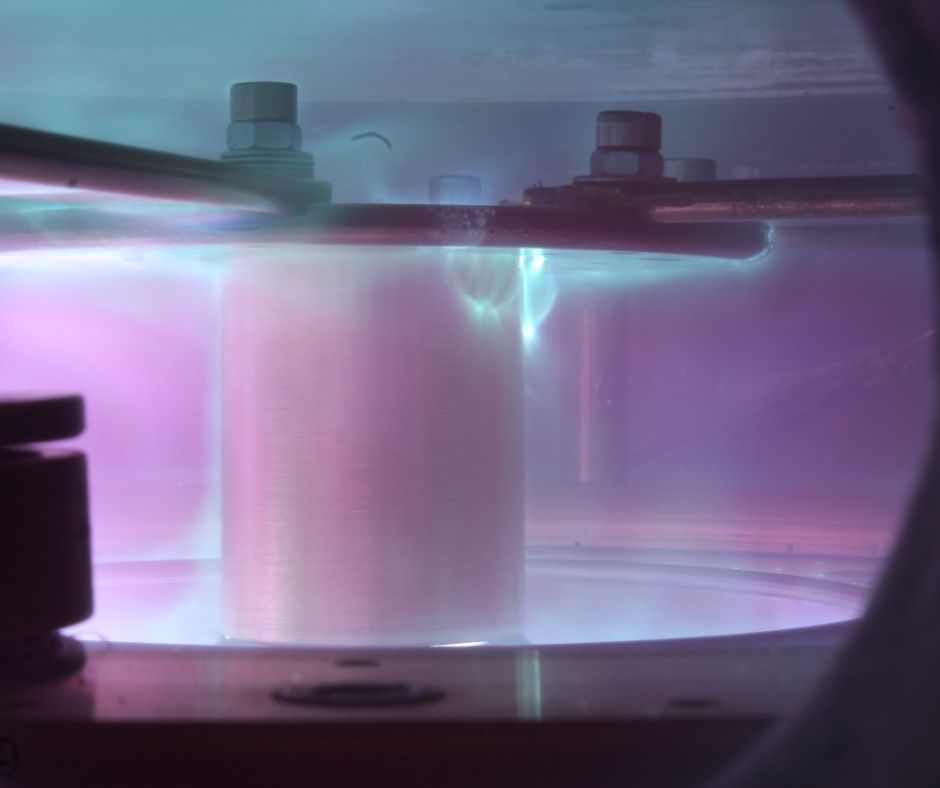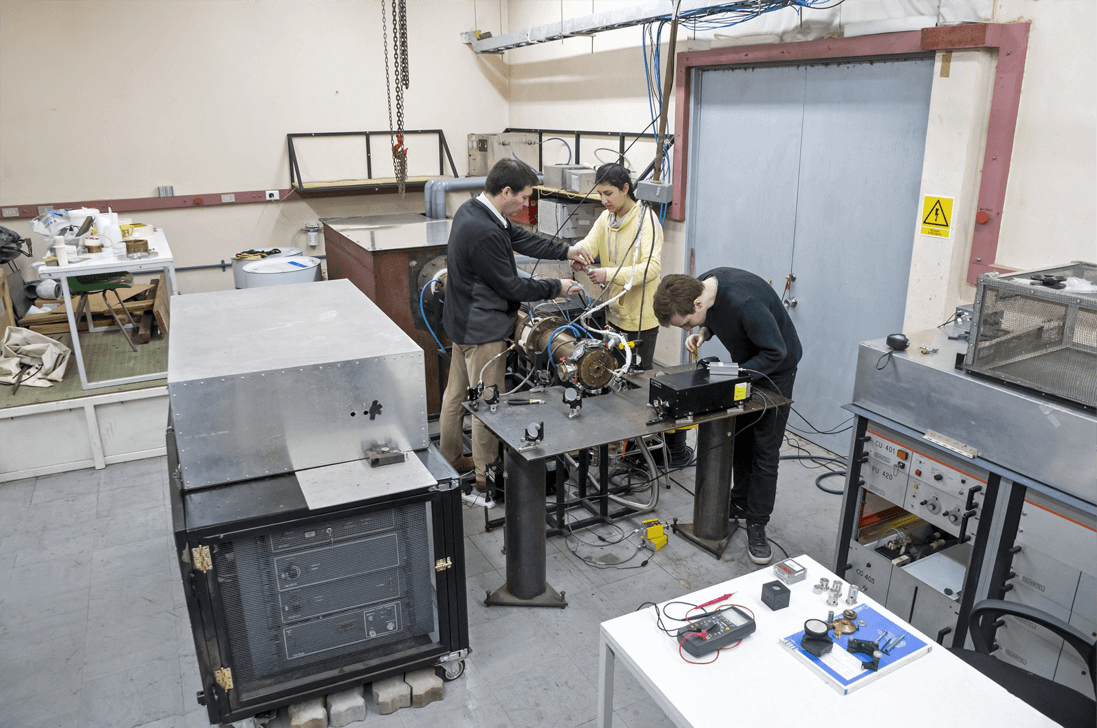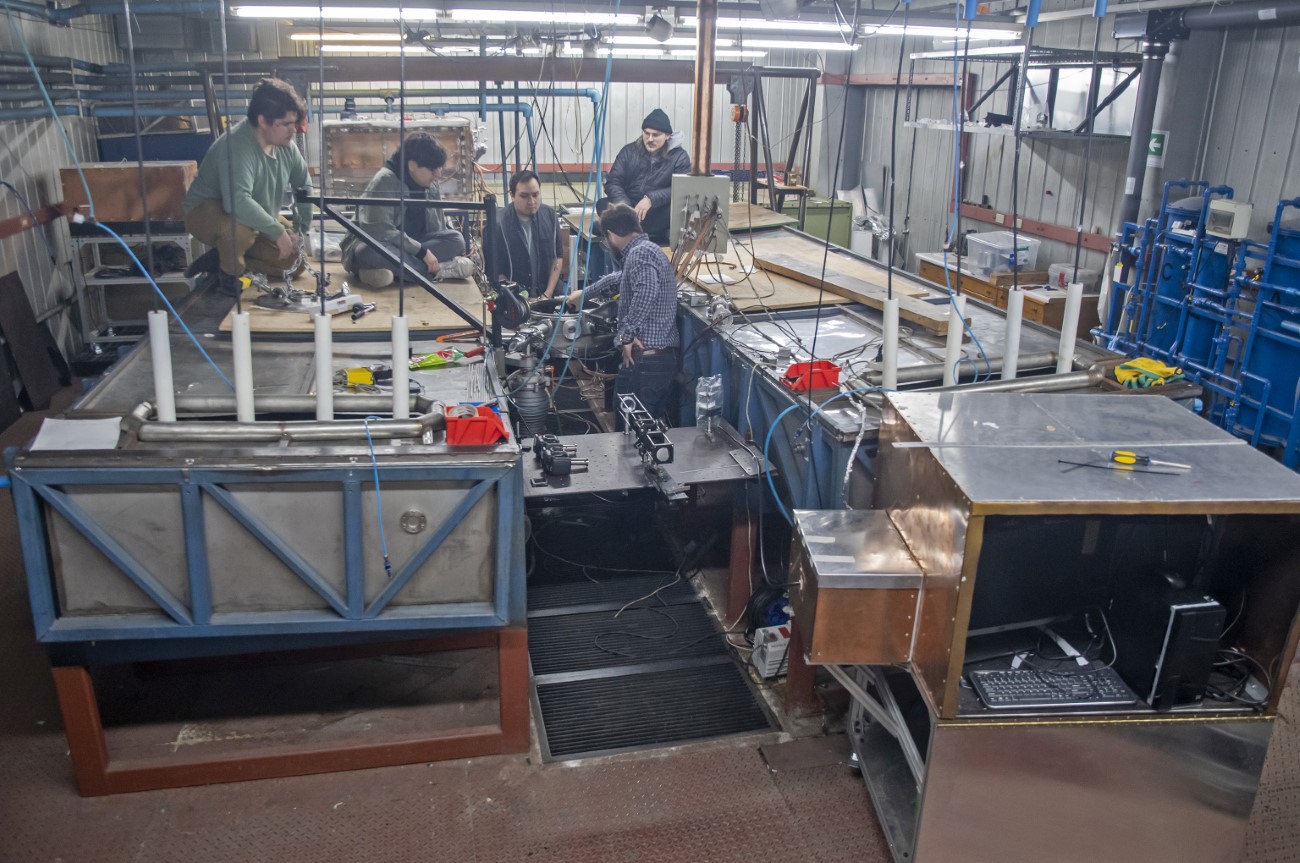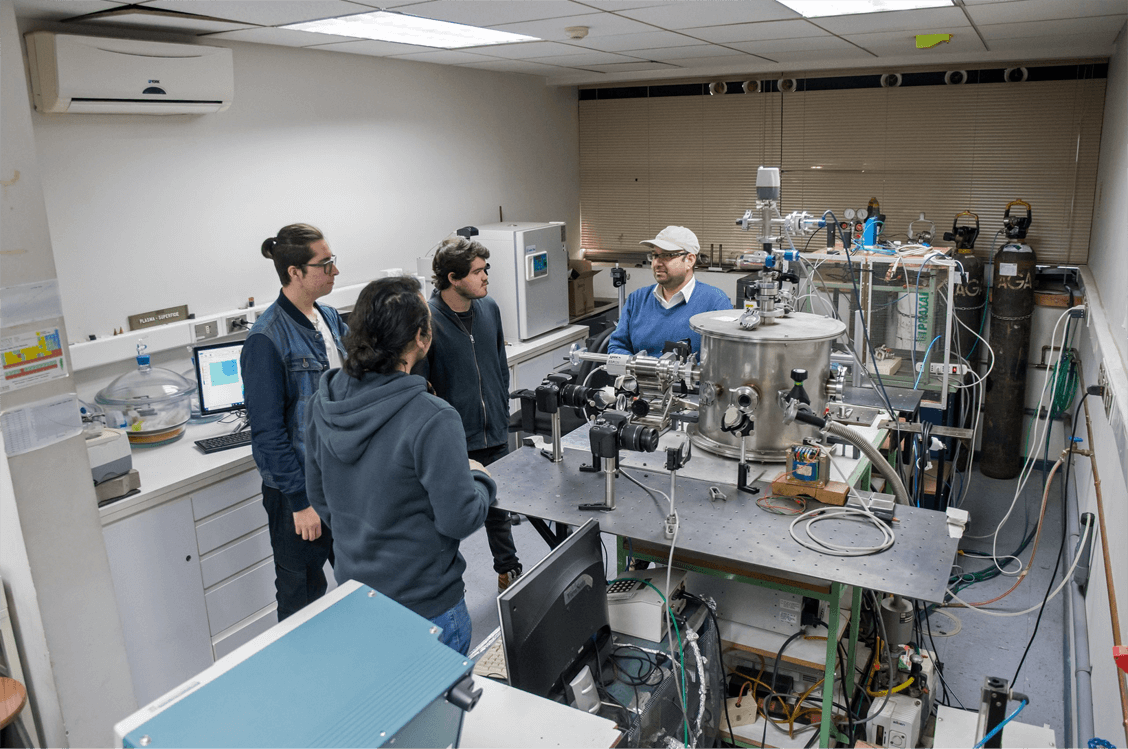Plasma is the fourth state of matter and is present in 99% of the visible universe. We know that it is composed of ions, electrons, and neutral particles that exhibit collective behavior. Despite having charged particles, they are electrically neutral and sensitive to external electric and magnetic fields. Because plasmas correspond mainly to electrons and ions (atoms that have lost electrons), their characteristic temperatures are very high – above 10,000º C – and energy must be delivered to them to avoid recombination that ultimately results in neutral gases.
ON THIS PAGE
Description
The UC Plasma Laboratory was created thanks to the efforts of Professor Hernán Chuaqui, one of the main promoters of the development of experimental physics in Chile and who headed this research group until his death. This was the first laboratory of its kind in the country and since its formation has continued its scientific and educational work unceasingly.

Questions this area strives to answer
Plasmas are formed in the laboratories of the UC Institute of Physics by means of high current pulsed electric discharges, high power lasers or external radiofrequency electric fields. For this purpose, we have a wide range of equipment both in plasma generators and diagnostics, most of which have been designed and built in this same laboratory. Thus, we can perform a wide range of experiments, where we not only study the basic science behind the behavior of matter under these extreme conditions of density and temperature, but also possible applications. Some ongoing applied research is the treatment of surfaces with carbon coatings -which can be used to improve the durability of drills or adaptation of implants in prostheses- or the study of low-energy X-ray emission for possible applications in the electronics industry or medical imaging, among others.
Research Area



